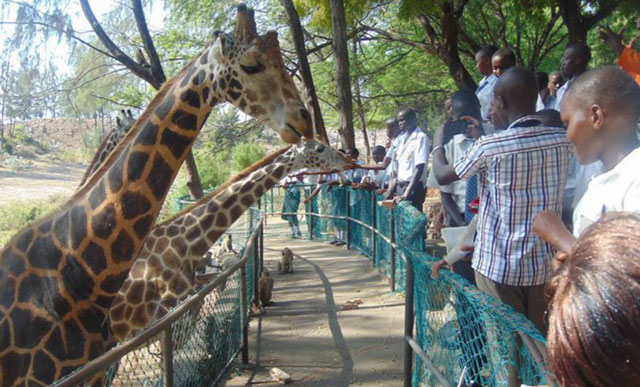
The communities neighboring Bamburi’s subsidiary in Uganda at Hima wants the cement firm to come up with a similar initiative there
Kasese, Uganda | ISAAC KHISA | One can hardly see any spot of environmental degradation. Haller Park, a 200 hectare experimental park, started in 1971 when Bamburi Cement Factory hired Dr. Rene Haller, a Swiss agronomist to rehabilitate the firm’s degraded environment as a result of limestone mining for cement production for the East African market.
In nearly two decades of Bamburi Cement’s operation, which is located 10 kilometers from the coastal town of Mombasa, the communities around the factory had a good share of social and economic problems.
But the cement firm’s initiative seem to have succeeded with the setting up of the Park, and now the communities that surround the firm’s operations in other countries especially in Hima in Kasese, South Western part of Uganda, where it has been in operation for more than two decades, think that it is time for the Bamburi to initiate similar projects there.
“If Lafarge could do something like that in Hima, it will be a way to pay for damaging us with all that cement dust we inhaled for years,” said David Gumisiriza in reference to Bamburi’s environmental initiatives in Kenya.
Bamburi Cement, which holds a licence that allows them to extract the raw materials only on land, obtains limestone or pozollana at a depth of 10-12 metres, and 30-50 centimeters to the water table.
Since then, the Lafarge Eco Systems – the environmental arm and subsidiary of Bamburi Cement – has built diverse ecosystems of forests, grassland and wetland habitats, restoring local indigenous forests that were under threat from habitat destruction and fragmentation in two quarries – Bamburi and Kilifi.
In total, the rehabilitated land is 320 hectares in Mombasa and Kilifi counties. The firm is also in preparation to rehabilitate the land in Katani, Machakos County, where it is mining pozzolana.
The rehabilitation involved landscaping, research and establishment of pioneer plantations of trees, followed by planting of target coastal vegetation that consist mainly indigenous, rare, endangered, fodder, herbs, and species of potential economic value.
Numerous animal species including hippopotamus, giraffes, pig warthog, snakes and crocodiles, were introduced to support ecological functions, with support from the Kenya Wildlife Service, Kenya Forestry Service and the National Environment Management Authority.
However, other creatures emerged naturally as a result of the cement firm’s support, according to Albert Musando, the head of Environmental Education & Ecosystems Management at Lafarge Eco Systems.
He cites butterflies that emerged as a result of creating an enabling environment that would see various insects thrive throughout their lifecycle.
“For instance, doing so means that the insects like butterflies can feed on flowers or nectar, can detect plants that are conducive for them to lay eggs on and breed,” Musando told journalists from Kenya, Ethiopia, Uganda, Rwanda, Tanzania and Malawi, who had gathered in the coastal city of Mombasa for a four-day Kenya Science Journalist Congress organized by Media for Environment, Science, Health and Agriculture (MESHA) starting on Nov.18.
“Now, that is what we spent most of our time on to ensure that we help the ecosystem recover either to its original status or something similar.”
 The Independent Uganda: You get the Truth we Pay the Price
The Independent Uganda: You get the Truth we Pay the Price





